At a time when PC sales are generally plummeting, the gaming segment has taken on a greener appearance for builders. Acer threw himself on it, successfully. The gaming screens of the manufacturers are among the best and its Predator notebooks have collected rave reviews since their release last year. The Predator G1 we test today belongs to a third category: it is a desktop PC.
A simple PC, therefore, but Acer took care to differentiate it from the innumerable existing towers. The G1 sports a resolutely "gamer" design and is distinguished by a very compact size considering its onboard power.
The config
Acer markets its Predator G1 710 in several versions. The one we received in test was equipped in the following way:- Processor: Intel i7 6700
- Motherboard: Acer
- Memory: 2 x 8 GB DDR4
- Graphics card: GeForce GTX 1080
- Power supply: 2 X 230 W external
- Storage: SSD Lite-on CV1 M.2 128 GB + Seagate SATA Hard Drive 1 TB
- Mechanical keyboard + mouse
- Dimensions: 41.9 x 34.8 x 11 cm
Its public price is 2100 euros, but it is still referenced to 1900 euros. However, its availability at present seems very limited, if not non-existent.
Made up as a stolen graphics card
With a gamer target and a name like Predator, Acer could not be shy about the look. The Predator G1 thus assumes threatening airs, like a beast covered with a carapace. Its facade advances in point. And of course, it lights up thanks to LED hidden in its shell. The black and red theme is a classic PC game. We like it or hate it, but we think that sometimes the builders do a little too much.
Lightweight finish
By disassembling the Predator G1, one notices that its flamboyant look conceals a construction to the economy. The most striking detail is the painting of the metal chassis, which has been affixed only to the visible parts of the exterior.In the same way, one notices quickly that the USB ports (including a USB C) and audio present on the front are not properly aligned with their plastic covers. By force, the passage of the catches will damage these parts. It is also regrettable that only one of the two side panels (the left when facing the PC) is actually intended to be disassembled. The other is simply clipped on the metal frame - numerous clips that will not withstand several dismantling.
These complaints also concern the peripherals supplied with the Predator - because, yes, Acer sells it in batch with a mechanical keyboard and a mouse. Technically they are good. The keyboard, for example, provides a comfortable and accurate typing. But its USB plug is there again staggered compared to the shell! On a PC at almost 2000 euros, this is a task.
But solid construction
We are all the more critical of the finish as the construction of the Predator is exemplary. Rarely did we encounter a graphics card as tightly fit. Placed parallel to the motherboard, it is held by a bracket that covers its entire back and connects it to both the front and back of the PC. Lovers of well-ordered cables will undoubtedly be delighted from inside the Predator: almost nothing goes beyond!
Cooling seems a little light. The CPU fan, in particular, is very small, as is the only casing fan placed above the VRMs on the motherboard. The graphics card is equipped with a radial fan, such as Founders Edition, which breathes through a dedicated opening on the right side of the case.
Let's finish with a word on scalability, theoretically rather good. The hard disk is removable, as is the SSD M.2. The CPU is placed on its LGA1151 socket and the graphics card can be replaced by another PCI-Express dual-slot model of comparable length. If it breaks down, a return to the after-sales service will be essential.
This motherboard is also powered, not by a standard ATX block, but by two external blocks of 230 W each. Conscious of the potential bazaar that these two imposing bricks represent, Acer provided a support to join them together and simplify the wiring. But honestly, this solution looks like a cautery on a wooden leg. In our opinion it would have been much better to integrate the power supply into the PC, both from an aesthetic point of view but also from a reliability point of view. Two blocks are more likely to fail than one (and the Predator G1 stubbornly refuses to start with a single power supply).
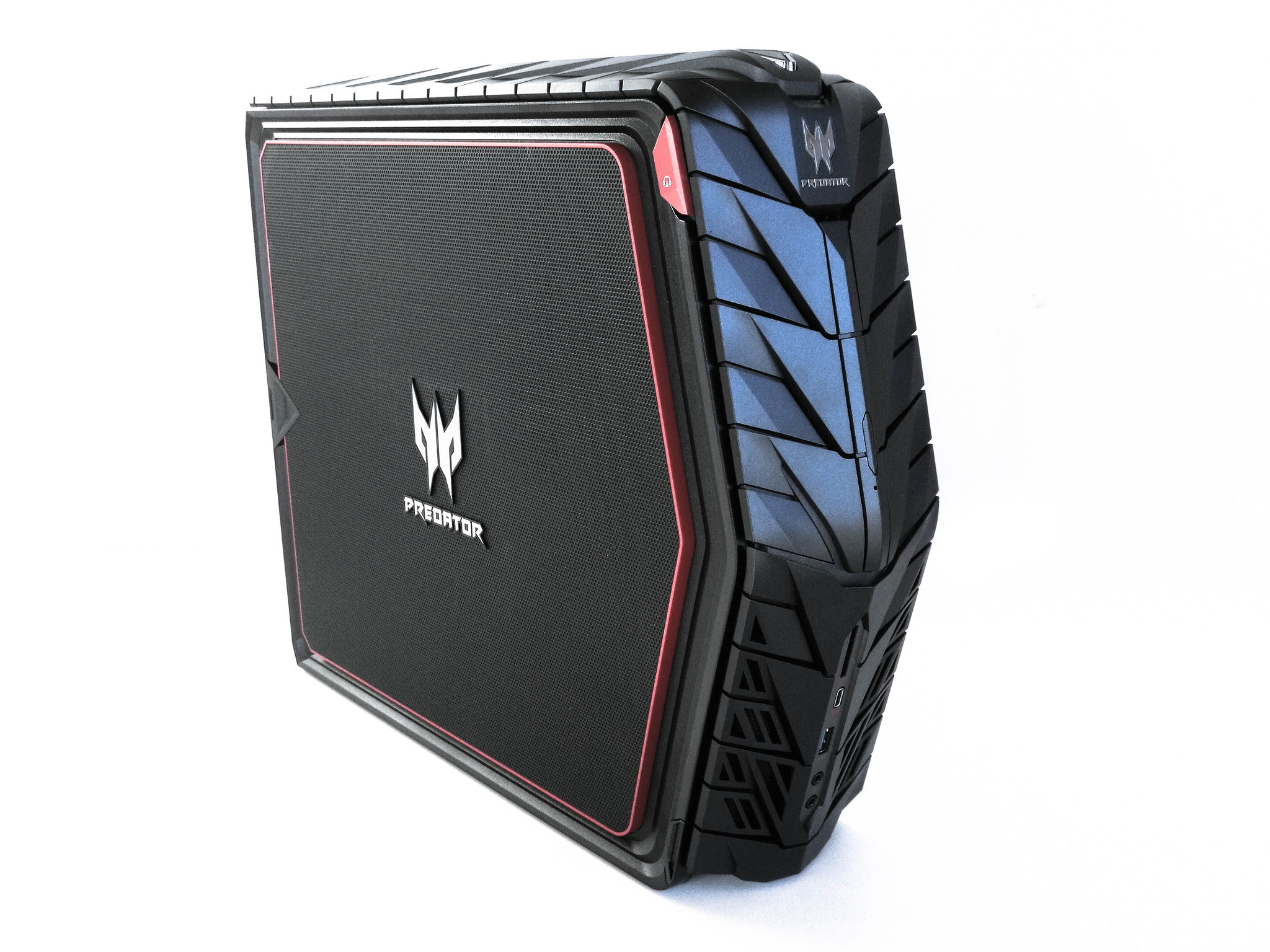
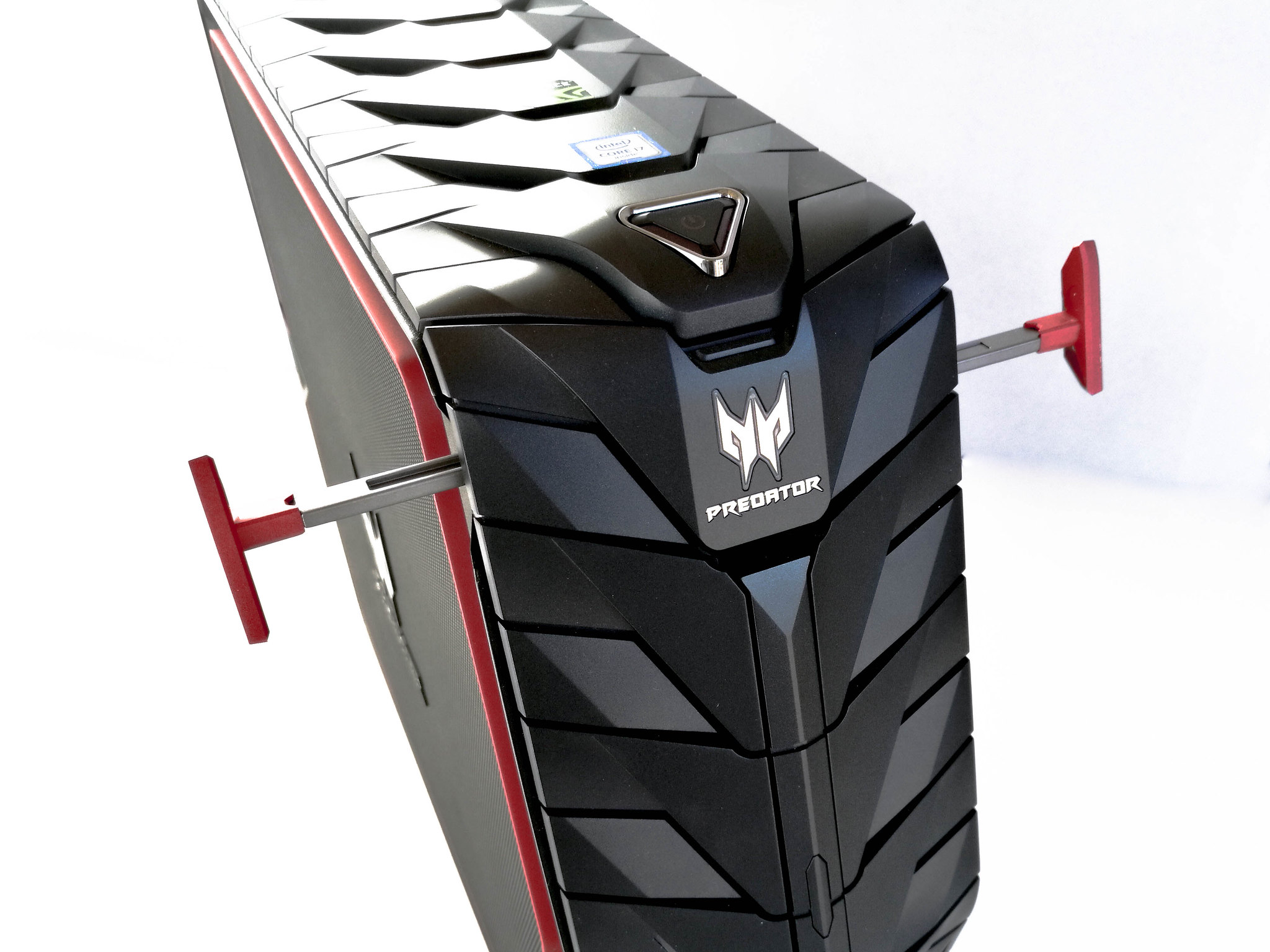
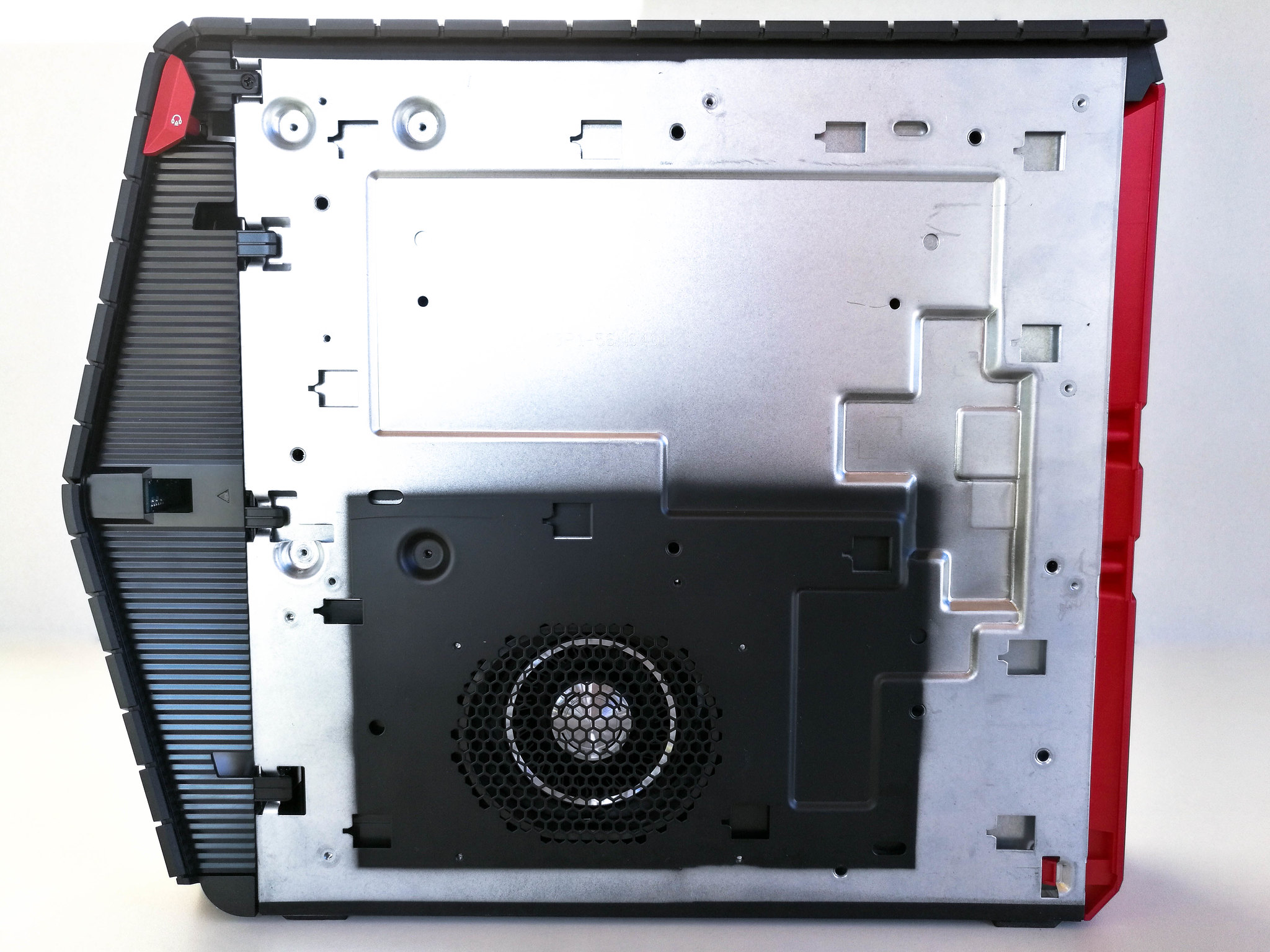
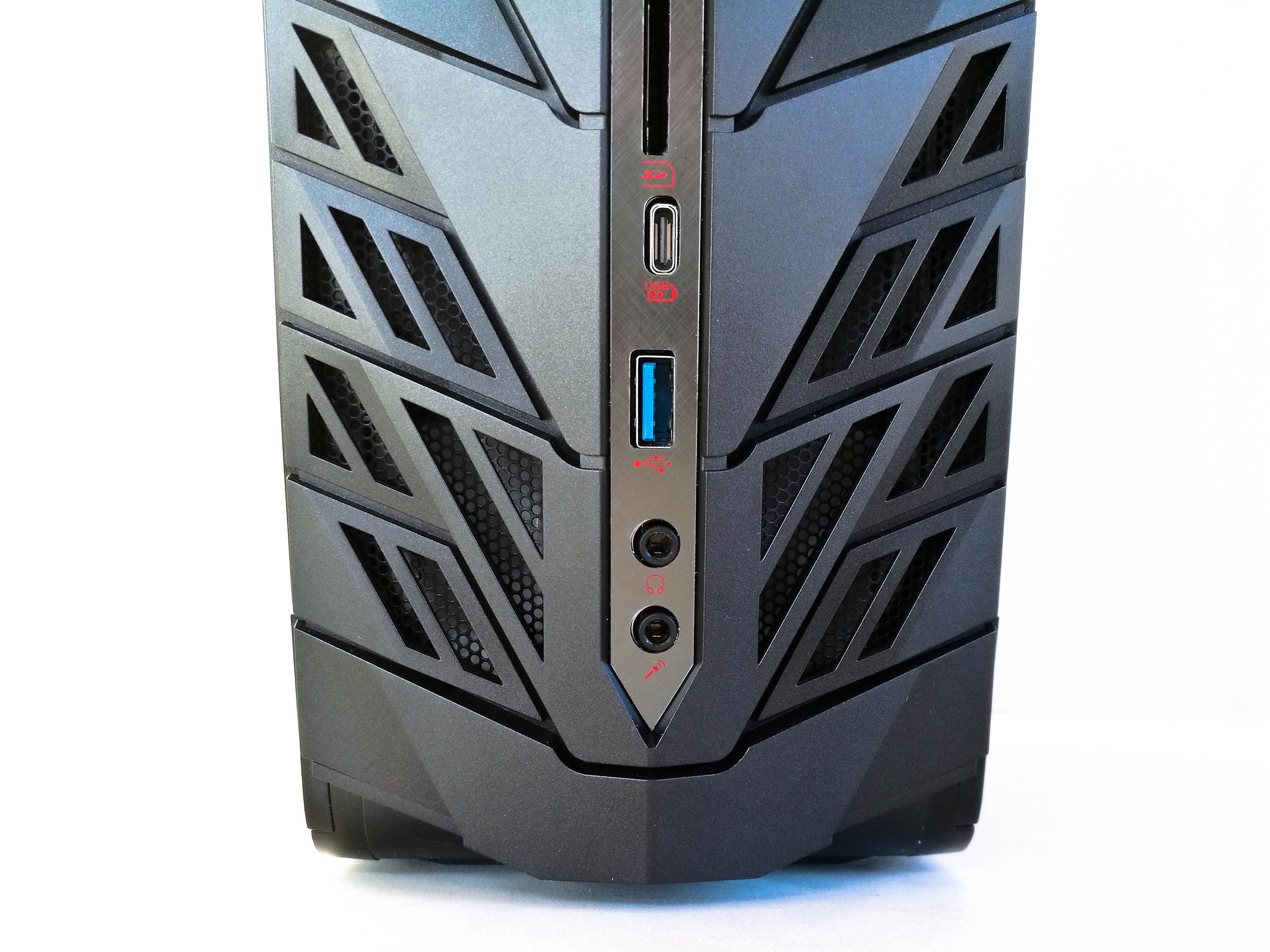
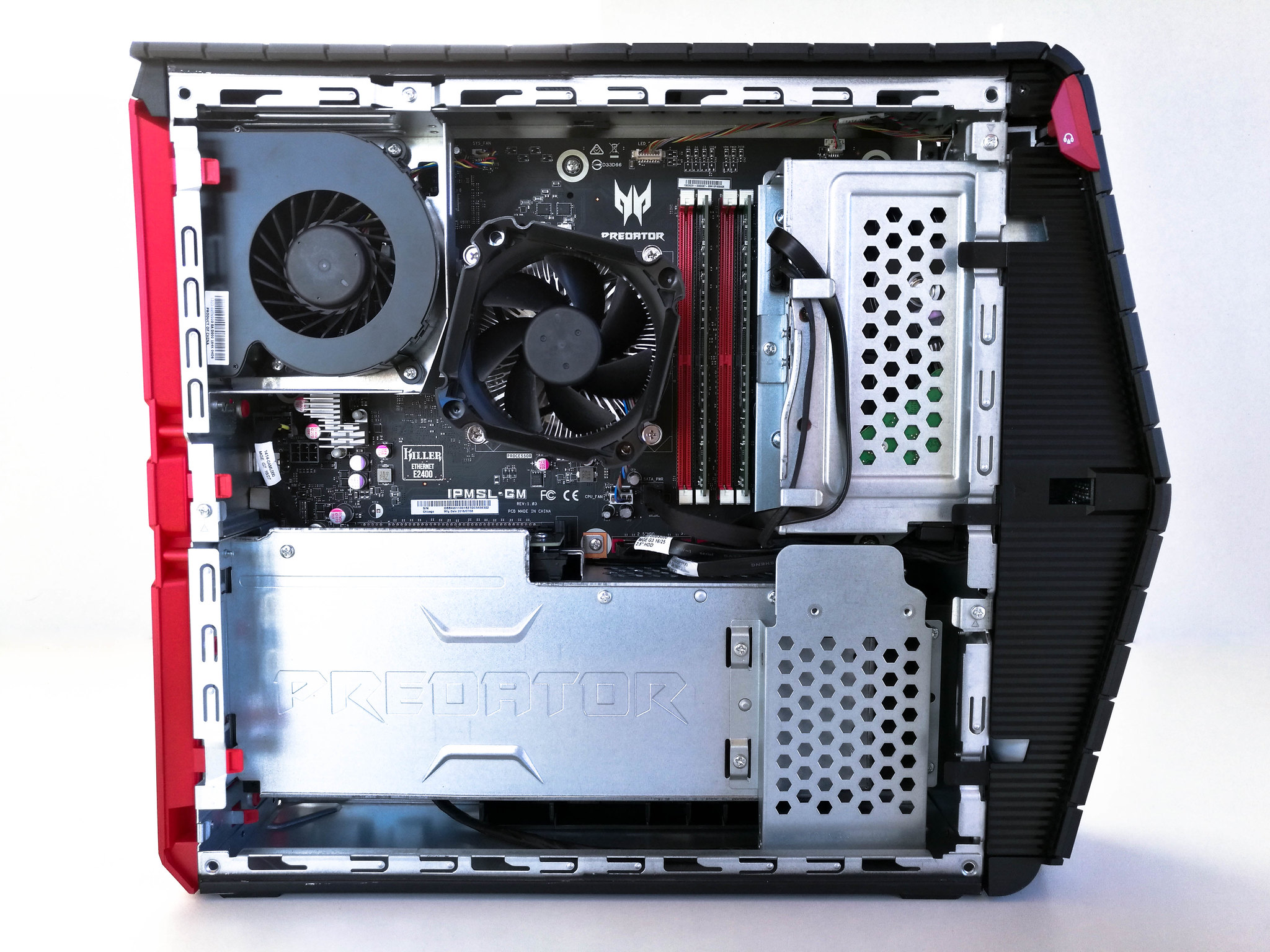
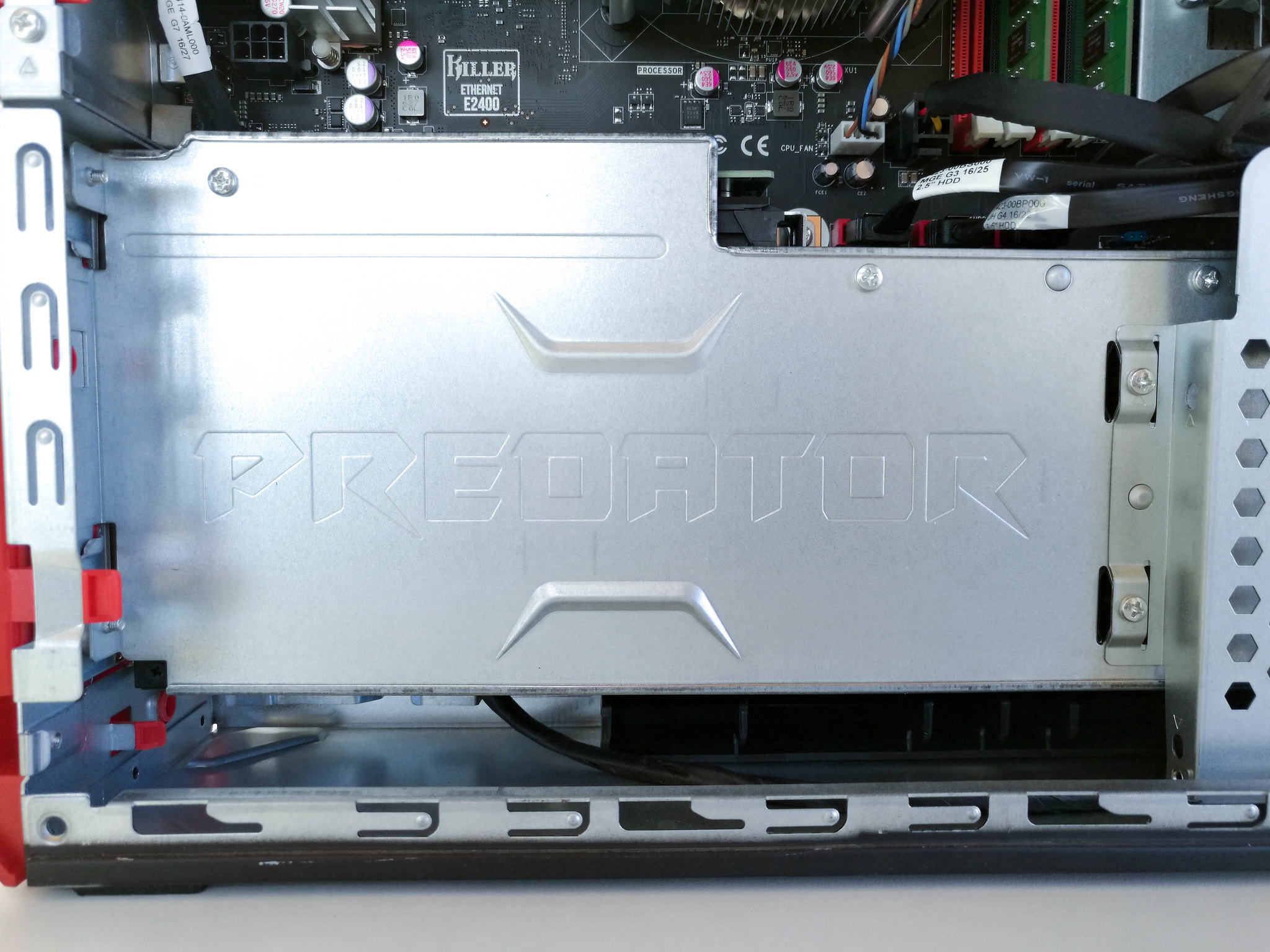


.jpg)


No comments:
Post a Comment